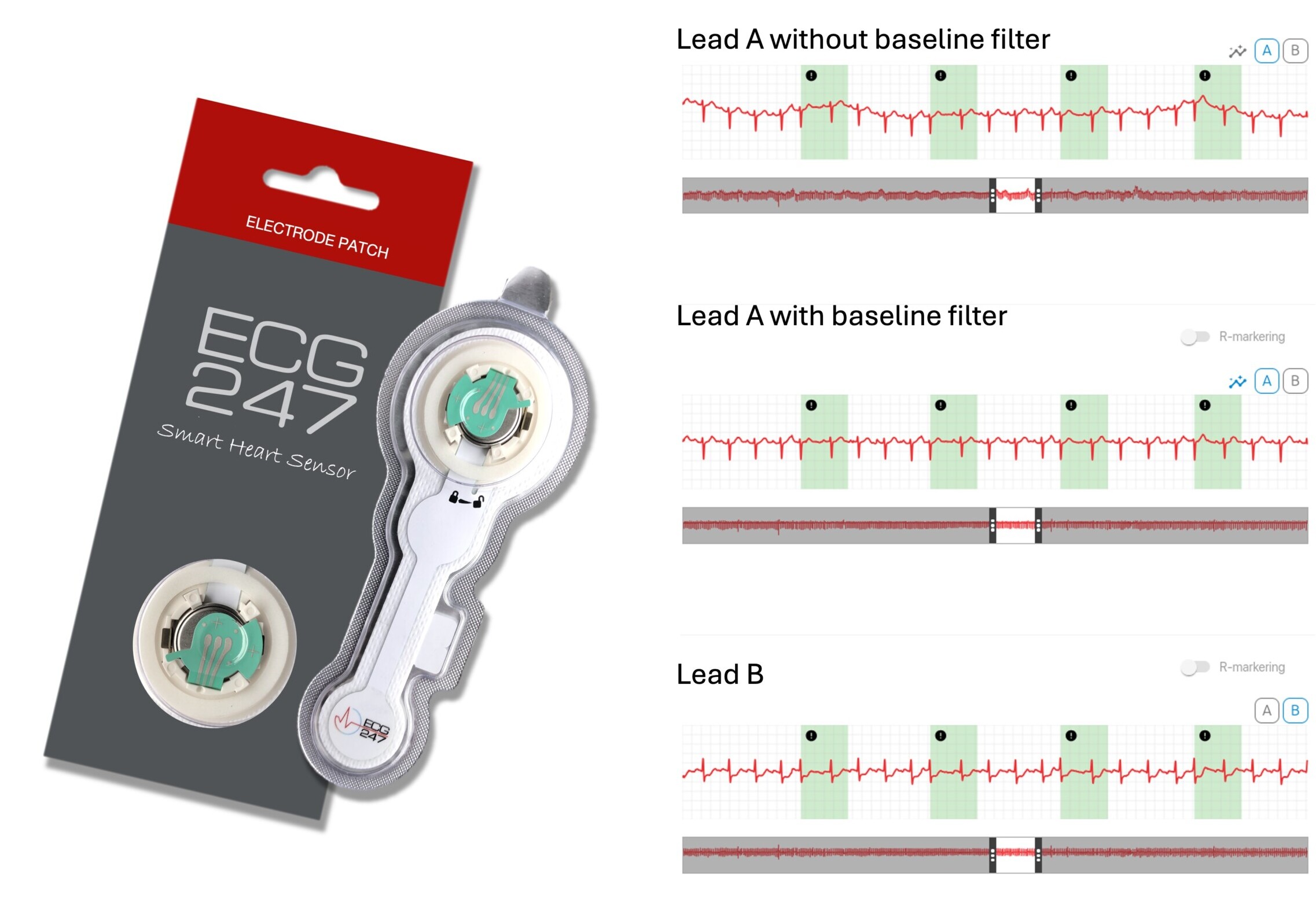
With our advanced electrode patch, we take advantage of the ability to record electrical signals from the heart through dual measurement points. Traditionally, a single lead signal is recorded, but we now introduce a methodology to establish an additional lead (lead B). The leads represent different electrical vectors through the heart, similar to the principle behind the classic ECG leads.
The advantage of including an additional lead is that you get access to more information about the electrical activity in the myocardium. Multiple leads increase the likelihood of detecting and characterizing arrhythmias, since different arrhythmias can appear more clearly in specific vectors. For example, some supraventricular and ventricular rhythm disturbances can be difficult to distinguish in a single lead, but easier to identify if you have an alternative recording axis available.
In addition, we introduce a baseline filter (baseline correction) to handle artifacts that occur during physical activity, respiration, or electrode disturbances. This filter corrects signal irregularities caused by baseline drift, allowing the electrical waveforms (P wave, QRS complex, and T wave) to be analyzed more accurately. The result is a cleaner and more clinically useful ECG signal, even under demanding conditions.
This combination of dual-lead acquisition and improved signal processing enables more robust and clinically relevant rhythm diagnostics, and will improve both screening and long-term monitoring of patients with suspected cardiac arrhythmias.



